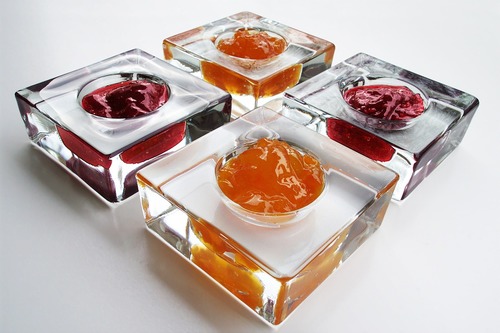Is Jelly Bad For You?
Also Known As: jam, marmalade
Short answer
Jelly containing high amounts of artificial sugar or high fructose corn syrup can be detrimental to one’s health. Jelly that does not contain high fructose corn syrup and is low in sugar, on the other hand, can be excellent for one’s health.
Recommended Alternative
A fairly even ratio of beneficial and harmful qualities. Moderation is important. Very general topics that can lean towards both sides of the spectrum will be placed here as well. Rice, for example, can be good or bad depending on the type.
View Full Grading System
Category 'A'
Very healthy and numerous health benefits. Side effects are rare. Things rated an 'A+' are typically necessary for survival (for example, water).
Very healthy and numerous health benefits. A few harmful qualities may be associated, but only under certain circumstances such as an allergic reaction.
Very healthy and numerous health benefits. Harmful qualities may be associated, but aren't usually serious.
It is important to note that even the best things in life can become bad in immoderate amounts. So, although something may be rated an 'A+', overconsumption/overdoing can bring unwanted effects.
Category 'B'
Very beneficial to your health. Things rated a 'B+' may have a few harmful qualities to pay attention to.
Overall beneficial to your health. Things rated a 'B' may have some harmful qualities to pay attention to.
More beneficial to your health than not. However, harmful qualities are most likely associated and shouldn't be overlooked.
The main difference between category 'A' and category 'B' is the harmful qualities typically present in 'B' items. Serious side effects are usually uncommon, but are still possible and should be taken note of.
Category 'C'
Both beneficial and harmful qualities associated. Things rated a 'C+' are typically a bit more on the beneficial side. Still, moderation is important.
A fairly even ratio of beneficial and harmful qualities. Moderation is important. Very general topics that can lean towards both sides of the spectrum will be placed here as well. Rice, for example, can be good or bad depending on the type.
More harmful than beneficial. Side effects are common, especially when consumed/done excessively. Moderation is very important.
Category 'C' usually denotes to both good and bad qualities. When it comes to this category, it is important to keep this word in mind: moderation.
Category 'D'
Harmful to your health. Although benefits may be associated, the bad most likely outweighs the good. Moderation is very important.
Harmful to your health. A few benefits may be associated, but the bad outweighs the good. Moderation is extremely important.
Harmful to your health. Very few, if any, benefits are present. Things in this category should be avoided as much as possible.
Category 'D' is typically for things that are more harmful than beneficial. While consuming/doing something unhealthy once in a blue moon shouldn't hurt, we definitely recommend eliminating 'D' items as a regular part of your routine/diet.
Category 'F'
Category 'F' is for things that fail to bring anything beneficial to the table, and are very harmful to your health. We recommend completely avoiding anything in this category. Long-term side effects of 'F' items are usually very serious.
Category 'N'
'N' stands for neutral. Things placed into this category are generally (a) neither good nor bad for you, or (b) lack the necessary evidence to reach any conclusions.
Long answer
Jelly is a substance commonly used as a sandwich spread that is made from fruit juice, pectin (which works as a gelling agent), and a form of sweetener (natural or artificial). There are several ways to make jelly, so the health benefits and risks vary. Generally speaking, jelly is not a huge health concern. Considering the typical serving size of jelly is too small to have a noticeable positive impact on your health, it is also most likely too small to have a negative impact. Therefore, for most people, jelly is a way to make something more flavorful without having to worry about gaining weight or experiencing any side effects.
There are benefits to eating jelly that has no high fructose corn syrup. The benefits come primarily through the fruit and provide the body with vital nutrients, help maintain weight while satiating one’s hunger, help the body form red blood cells, etc. Furthermore, pectin is a fiber and is used medicinally to treat high cholesterol and helps prevent and treat some forms of cancer. The downside to jelly is that if high in HFCS or sugar content (other than natural sugar from the fruit), there are risks including diabetes, tooth decay, weight gain, and increased triglyceride levels. When overconsumed, pectin also has the potential to block minerals, such as zinc and potassium, from entering the bloodstream and cause irritation of the bowels.
Possible short-term side effects
- bloating
-
diarrhea
-
blood sugar spike
Possible long-term side effects
- tooth decay
-
weight gain
-
diabetes
-
heart disease
-
increased triglycerides
Ingredients to be aware of
Benefits
- natural jelly can:
-
provide vital nutrients
-
enhance satiety
-
help prevent cancer
-
lower "bad" cholesterol
-
promote healthy skin
Healthier alternatives
- natural jelly
-
crushed berries
Our Wellness Pick
(what is this?)
Crofters Raspberry Spread
- Organic ingredients
- Premium quality
- Rich in flavor
- Non-GMO verified
- 16.5 Oz jar
Learn More!
Please turn your Ad Blocker off to see this content. Thank you!
Thank you for your feedback!
Written by Healthy Living 35
Published on: 12-29-2015
Last updated: 12-01-2023
Thank you for your feedback!
Written by Healthy Living 35
Published on: 12-29-2015
Last updated: 12-01-2023

 Approved by
Approved by 















